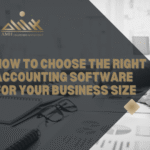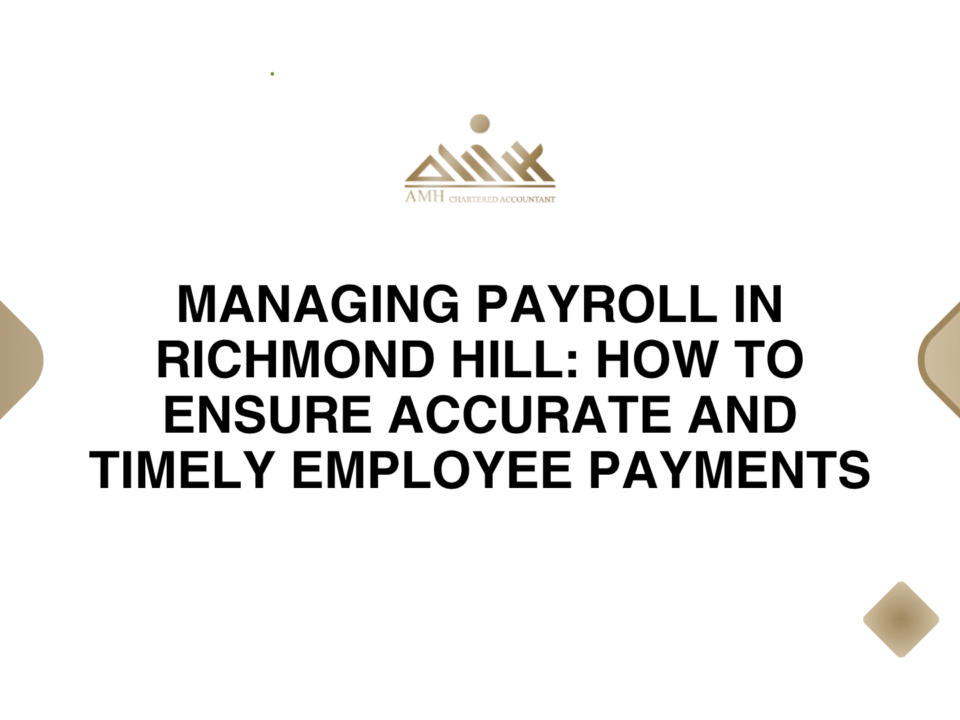
How to Choose the Right Accounting Software for Your Business Size
June 5, 2025
Optimizing Cash Flow: Practical Tips for Growing Companies
June 15, 20255 Key Financial Metrics Every Business Owner Should Track
Boost your business strategy by mastering these five essential financial indicators—crafted for clarity by AMH Chartered Professional Accountant.
Introduction: Why Financial Metrics Matter
Every business decision, big or small, comes down to numbers. Whether you’re budgeting, hiring, or launching a new product, financial clarity shapes outcomes. At AMH Chartered Professional Accountant, serving businesses across Toronto, Milton, Oakville, Hamilton, Kitchener, Waterloo, and the GTA, we help owners master the financial pulse of their operations. This article walks you through five essential financial metrics you should track regularly—metrics that reveal the health, direction, and potential of your business.
The Role of Financial Intelligence in Business Success
Smart decisions rely on real-time, accurate data. Financial metrics offer a quantifiable view into performance. Instead of guessing, you’ll be acting with intention. The metrics we explore here aren’t just numbers—they are decision-making power tools.
Understanding Financial Metrics for Growth
Not all metrics are created equal. Many businesses get lost in vanity metrics—those that look good on paper but offer little actionable insight. The five we discuss here are practical, insightful, and relevant across industries and business sizes.
What Makes a Financial Metric ‘Key’?
A metric becomes “key” when it:
Ties directly to your business goals
Reveals efficiency or profitability
Helps predict future performance
Can be tracked consistently
The Value of Consistent Tracking
Tracking one month of revenue is interesting. Tracking twelve months reveals trends, seasonality, and growth. Consistency brings clarity. That’s why AMH offers ongoing financial monitoring and reporting, tailored to each client.
How AMH Chartered Professional Accountant Supports Strategic Financial Analysis
We go beyond taxes and bookkeeping. With financial dashboards, metric analysis, and performance reviews, AMH CPA empowers business owners to make data-driven choices.
Revenue Growth Rate
Understanding Revenue Growth Rate
This metric shows how quickly your revenue is increasing. It’s a sign of your business’s trajectory and momentum. High revenue growth typically reflects strong demand or expanding market share.
Calculating and Interpreting Revenue Growth
Use this simple formula:
Revenue Growth (%) = (Current Period Revenue – Previous Period Revenue) / Previous Period Revenue × 100
If you earned $120,000 this quarter, compared to $100,000 last quarter, your growth rate is 20%.
Why Revenue Trends Are Critical
Monitoring trends over time can signal when to scale, invest in marketing, or tighten expenses. A sudden dip? That’s your cue to investigate.
Gross Profit Margin
What Is Gross Profit Margin?
This metric tells you what portion of your revenue remains after covering direct costs (like inventory or service delivery).
The Formula and What It Tells You
Gross Profit Margin = (Revenue – Cost of Goods Sold) / Revenue × 100
If you generate $200,000 and your cost of goods sold is $120,000, your margin is 40%.
Using Gross Profit to Measure Business Efficiency
This margin shows how efficiently you produce and deliver. A shrinking margin? It’s time to revisit pricing, vendors, or production processes.
Operating Cash Flow
What Is Operating Cash Flow?
Unlike net profit, this tells you how much actual cash is flowing through your business—your liquidity.
How to Analyze Cash Flow Health
Positive cash flow means you’re earning more than you’re spending, a sign of operational strength. Negative? You’re likely dipping into savings or loans.
The Difference Between Cash Flow and Profit
You can be profitable on paper and still run out of cash. That’s why this metric is crucial—especially for startups or seasonal businesses.
Net Profit Margin
Defining Net Profit Margin
This shows what percentage of your revenue ends up as profit after all expenses (including taxes, interest, and overhead).
How Net Profit Reflects Overall Performance
Use this formula:
Net Profit Margin = Net Income / Revenue × 100
If you earned $20,000 on $100,000 in revenue, your margin is 20%. This metric reflects how lean and profitable your operations are.
Adjusting Strategies Based on Net Profit Margins
A low or declining margin can highlight inefficiencies or rising costs. AMH CPA helps interpret these numbers and strategize accordingly.
Customer Acquisition Cost (CAC)
What Is CAC and Why It Matters
CAC shows how much it costs to gain a new customer. It includes marketing, sales salaries, and advertising. Keep it low for better ROI.
Reducing CAC for Better ROI
By optimizing ads, improving targeting, or increasing referrals, you lower this cost—and boost profitability.
CAC vs Customer Lifetime Value (CLV)
Your CAC should be significantly lower than your CLV. If you spend $100 to gain a customer who stays for $500 in value, you’re in good shape.
How to Track These Metrics in Real Time
Software tools like QuickBooks Online, Xero, Zoho Books, and custom dashboards help automate tracking. AMH CPA helps set these systems up and teaches you how to use them.
Tools for Monitoring Financial Metrics
| Tool | Strengths |
|---|---|
| QuickBooks Online | Real-time dashboards, cash flow tools |
| Xero | Great for service-based businesses |
| Zoho Books | Strong automation, cost-effective |
| AMH CPA Dashboards | Custom, accountant-verified insights |
Integrating Metrics into Business Planning
Once you have these numbers, you can:
Set sales targets based on past revenue growth
Reallocate budgets using net margin insights
Time product launches based on cash flow
AMH’s Approach to Strategic Financial Reviews
We offer quarterly performance reviews, KPI reports, and budget-to-actual analysis—giving you the insight to lead with confidence.
Common Mistakes in Tracking Financial Metrics
Tracking too many or irrelevant metrics
Ignoring trends and acting on single data points
Using outdated or manual tools
Failing to reconcile with actual cash data
Best Practices for Long-Term Financial Tracking
Use software to automate reporting
Schedule monthly metric reviews
Compare forecasts vs actuals
Meet with an accountant quarterly
When to Outsource Financial Monitoring
If metrics feel overwhelming or are inconsistent, it’s time to bring in help. AMH CPA provides expert metric tracking without breaking your budget.
Final Thoughts: Data-Driven Decisions Build Stronger Businesses
In a competitive market, intuition isn’t enough. Financial metrics offer a compass to navigate risk, plan growth, and optimize performance. With AMH Chartered Professional Accountant, you gain not just numbers—but insight, clarity, and strategy.
📞 Ready to take control of your financial metrics? Book a free consultation with AMH at (416) 900-6079 or visit amhtaxes.com.
FAQs
What’s the most important financial metric for small businesses?
Net profit margin and operating cash flow are vital—they show sustainability and real cash availability.
How often should I review financial metrics?
Monthly for key metrics, and quarterly with your accountant for strategic planning.
Can AMH help me set up metric tracking?
Yes. We build dashboards, provide training, and manage reporting for startups and established firms alike.
How does CAC impact profitability?
High CAC lowers your margins. You need to optimize customer acquisition to scale profitably.
Is revenue growth enough to measure success?
No. Without healthy margins or cash flow, growth can be misleading. Track all five key metrics.
What if I don’t use accounting software yet?
AMH CPA helps you choose and implement the right tools for your business size and needs.




